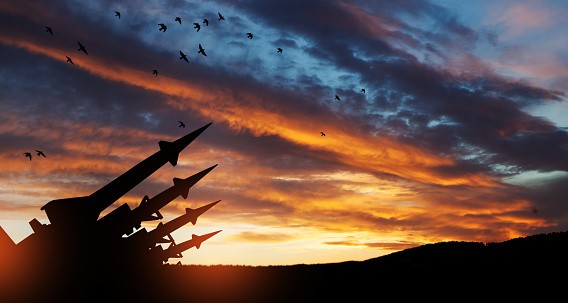
The risk of nuclear warfare is currently at its highest point in decades, becoming a more complex one involving more countries and more technologies.
Dark Clouds Loom
According to Matthew Bunn, a professor of energy, national security and foreign policy in Harvard, we are at a time when leading experts who were key to preventing nuclear conflicts are "aging out". He pleads that leaders should urgently ask for the help of a new generation of scientists and engineers.
Bunn refers to a worldwide landscape that is marked by increasing nuclear tensions. These include China's construction of missile silos, Russia's nuclear threats in the Ukraine conflict, North Korea's missile testing, Iran's nuclear ambitions, and the current nuclear rivalry between India and Pakistan.
In response to these events, policymakers in the US consider a potential nuclear arms buildup. Military balances are also destabilized by advancements in technologies such as artificial intelligence and hypersonic missiles.
In his paper "Reducing nuclear dangers," Bunn reported that "dark clouds lay on the nuclear horizon, with threats from all directions." He warned that the 2010 New START Treaty is the last remaining agreement that limits the nuclear forces of the US and Russia. However, this treaty will expire in 2026, with Russia blocking the required inspection and without new talks underway.
As of 2024, there are over 12,000 nuclear weapons around the world. According to the Federation of American Scientists, the US has about 5,100 warheads, Russia has around 5,580, China has 500, the UK has 225, and France has 290. Meanwhile, India and Pakistan each have about 170 warheads, North Korea has 50 and Israel has 90.
Becky Alexis-Martin, a lecturer in Peace Studies and International Development at the University of Bradford in the U.K., agrees that we are currently in a time of nuclear tension. He believes that there is a real risk of nuclear war as long as humanity has nuclear weapons.
The risk of nuclear war has not been so high since the Cuban Missile Crisis of October 1962. It was a direct and dangerous confrontation between the US and the Soviet Union during the Cold War and was considered the moment when these two superpowers came closest to a nuclear war.
What Should Be Done to Avoid the Catastrophe?
Historically, arms control agreements were facilitated by non-governmental conversations among scientists and engineers. According to Bunn, the initial steps should focus on reducing US tensions with Russia, China, and North Korea, as well as establishing communication and risk reduction policies.
Bunn believes that there should be in-depth technical dialogues in the scientific community to address issues such as the reduction of conflict in outer space and cyberspace. World leaders should also discuss how new technologies like artificial intelligence and commercial space systems can verify the next generation of arms restraints.
Bunn suggests that the US, Russia, and China should think of ways to reduce hostility, build predictability, and prevent the perils and costs of unrestrained competition. These parties should end their dependence on "launch on warning" policies and take their missiles off alert. This way, decisions on life or death for millions of people will not be made in a matter of minutes.
RELATED ARTICLE : Can You Survive Nuclear War? Here's Where You Should Hide in the US
Check out more news and information on Nuclear War in Science Times.
© 2026 ScienceTimes.com All rights reserved. Do not reproduce without permission. The window to the world of Science Times.











